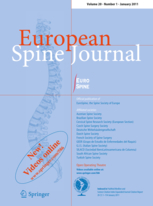
GENERAL ORTHOPAEDICS
Digital imaging results in lower radiation dose than conventional film imaging
Eur Spine J. 2006 Jun;15(6):752-6. Epub 2006 Apr 22150 patients with a scoliotic or kyphoscoliotic deformity were included in a study to evaluate three radiography techniques. Patients were randomized to receive a conventional standing postero-anterior full spine radiograph, X-ray using the digital storage phosphor plate system (CR), or digital pulsed fluoroscopy. After the 9 months in which all radiographs were taken, the two digital methods (X ray using the CR system and digital fluoroscopy) were found to have a lower mean dose area product than the conventional full spine radiograph. Although conventional full spine films offered superior image quality, there was no significant difference in interobserver error for Cobb-angle measurements between the three groups.
Unlock the full ACE Report
You have access to {0} free articles per month.Click below to unlock and view this {1}
Unlock NowCritical appraisals of the latest, high-impact randomized controlled trials and systematic reviews in orthopaedics
Access to OrthoEvidence podcast content, including collaborations with the Journal of Bone and Joint Surgery, interviews with internationally recognized surgeons, and roundtable discussions on orthopaedic news and topics
Subscription to The Pulse, a twice-weekly evidence-based newsletter designed to help you make better clinical decisions
Exclusive access to original content articles, including in-house systematic reviews, and articles on health research methods and hot orthopaedic topics
Or upgrade today and gain access to all OrthoEvidence content for just $1.99 per week.
Already have an account? Log in


Subscribe to "The Pulse"
Evidence-Based Orthopaedics direct to your inbox.
{0} of {1} free articles
Become an OrthoEvidence Premium Member. Expand your perspective with high-quality evidence.
Upgrade Now












































































